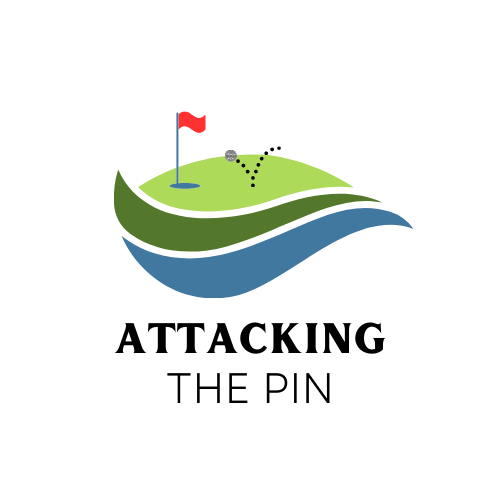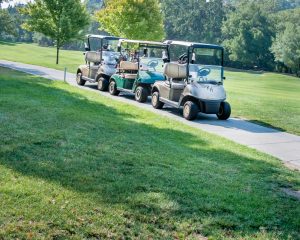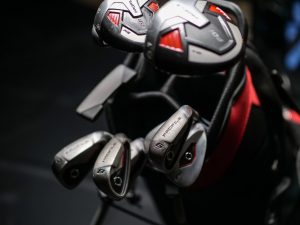There are historically 4 types of golf clubs
- Woods
- Irons
- Wedges
- Putter
As technology has improved, however, new clubs have been added to the mix. Hybrids, utility irons, ironwoods, rescue clubs, and oversize drivers all have found their place in a golfer’s bag. Each of these clubs has a specific use and has kept to the themes of the original 4 types of clubs. Woods are hit from the teebox, irons/hybrids from the fairways, wedges from around the green, and putters on the green.
We’ve put together a guide to the different types of golf clubs available to golfers today.
Woods
Named for their historical hickory or persimmon heads, woods are the longest and the lowest lofted clubs in a golf bag. Woods generally don’t have even numbers denoted as 1-wood (or Driver) 3-wood, 5-wood, and sometimes 7-wood. There are exceptions to this, most notably Phil Mickelson who carries a 2-wood “mini driver” from time to time.
Driver
The driver is the most loved and hated club in the bag. Players hit the “Big-Dog” the furthest of any club. The problem is that many golfers don’t hit their driver as straight as they would like. This is because the loft angle of the club doesn’t allow for much forgiveness side to side when striking the ball. As a result the Driver produces more pronounced side spin leading to an increased number of sliced and hooked balls.
The head of the driver can be as large as 460 cubic centimeters. Pros will occasionally use a smaller driver to increase their shot making ability but rarely smaller than 440 cc. Most pros who have played a smaller driver have moved to a 460 cc driver in favor of the forgiveness offered. Improvements in technology have allowed similar levels of shot making capability in the larger driver head.

Most modern drivers have some level of adjustability. Some have weights you can remove or interchange to set the driver up to play more of a fade or a draw. Other drivers allow you to change the loft angle as well as the face angle of the club to alter the flight path of the ball. According to Rule 4.1a(3) of the USGA golf rules, you cannot adjust the club during play.
Fairway Woods
Fairway woods are shorter, smaller, and have higher loft than their number 1 counterparts. As a result they have higher ball flight and shorter distance than the driver. This has two advantages:
- If a hole doesn’t require the full driver length off the tee. Hazards at a certain distance can present problems for a driver or a short dogleg might merit a shorter shot from the tee.
- On long par 5s fairway woods allow for more distance on a 2nd shot.
3-woods and 5-woods are the most commonly carried fairway woods in golfers bags. Because of the head shape and weight distribution, they are easier to make solid contact with from the tee box or fairway. The large head does have its drawbacks. Shots made from the rough or a tricky lie can be much more difficult to strike with a fairway wood.
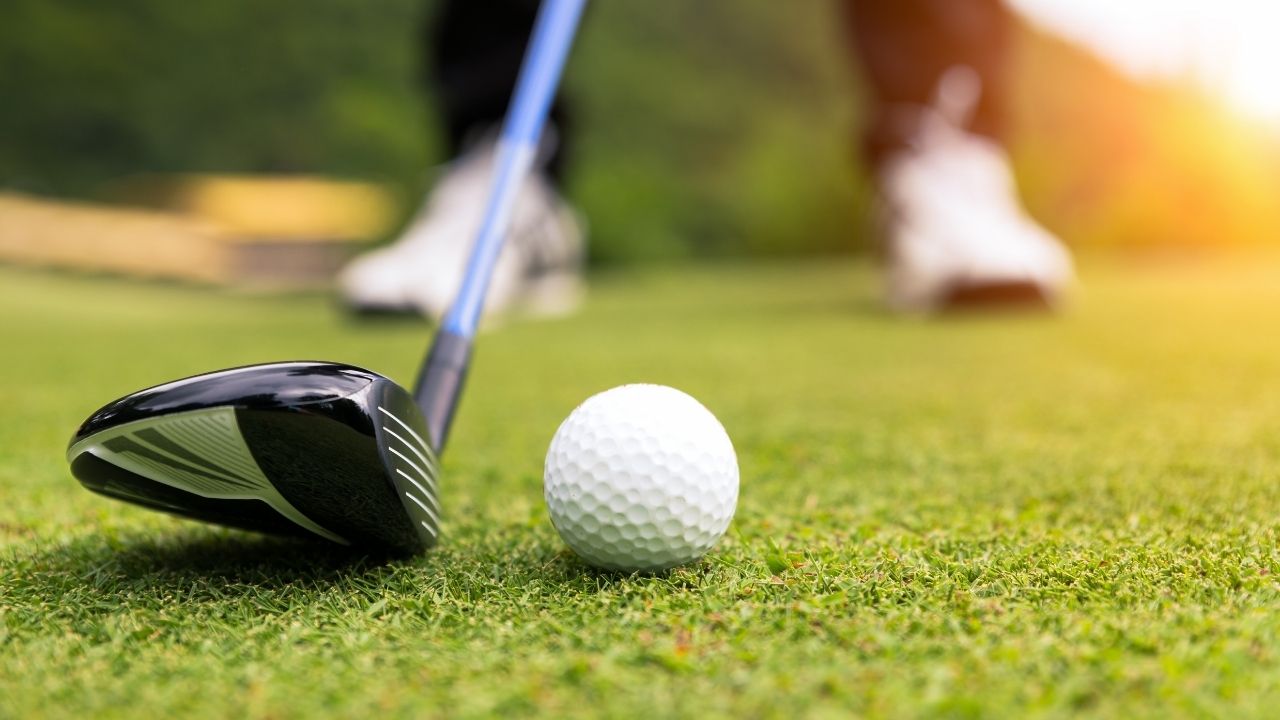
Modern fairway woods are often adjustable, able to switch between club numbers. I recently added a 5-wood to my bag adjustable from a 5-wood to a 7-wood. There are also woods adjustable between 3-wood and a 4-wood. Like drivers, many fairway woods have adjustable weights or face angles to allow players to favor a fade or a draw with their club.
Hybrids
Hybrids are a club that attempts to take the best of both worlds from the woods and irons. Hybrids have smaller heads than fairway woods but have the more bulbous geometry. The most common hybrids are 2-5 with lofts from 17°-27°. Manufacturers design hybrids to replace irons with the same number.
Due to their head design, these clubs perform better out of tougher lies. The small head doesn’t get caught up on the rough like a fairway wood might. Hybrids are often denoted as “rescue clubs” because of this.
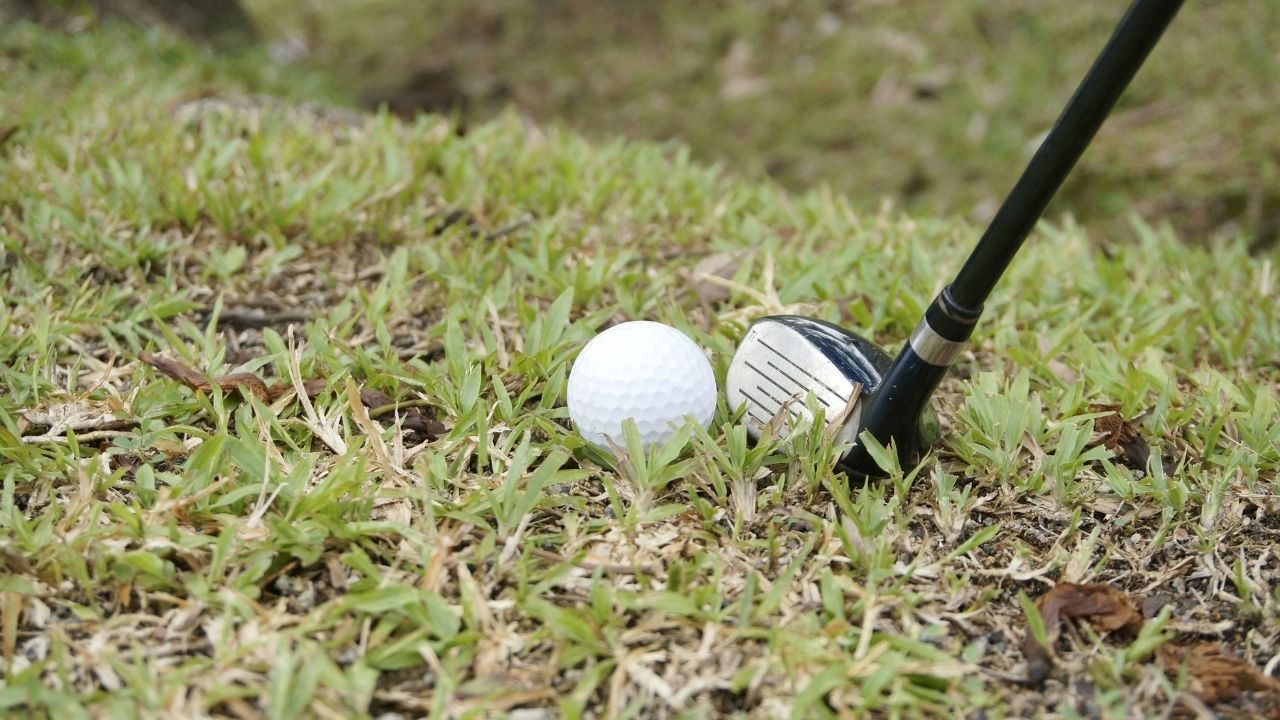
The head design also is helpful for players with slower swing speeds. Weight distributed towards the rear of the club drives through impact forcing the ball up in the air.
Hybrids are more forgiving than irons due to a much larger sweet spot. The downside of this is always a loss of shot making ability but such is the nature of all golf clubs. This larger sweet spot allows for much better directional control of a shot.
Many pros are taking advantage of hybrid technology and they show up in more and more PGA Tour bags. If you aren’t playing a hybrid, it’s definitely worth looking into.
Irons
Irons come in numbers anywhere from 1-9. The 1 iron is rarely used but does have a sweet nickname – the butter knife. Legends such as Ben Hogan and Jack Nicklaus used 1-irons and 2-irons but fairway woods and hybrids have replaced these clubs
3-irons through 9-irons fill the gaps in distance between woods and wedges. Before the rise in popularity of hybrids a typical set included many more irons. Today a set will often not include a 3-iron, 4-iron, or even sometimes a 5-iron. Some sets only consist hybrids or iron-woods as they are sometimes called.
People talk about irons based on construction or based on player skill level.
Muscle Back Irons vs Cavity Back Irons vs Hollow Irons
Muscle back irons, referred to as blades, are thin, solid, often forged clubs. These clubs offer great workability but very little forgiveness. Historically all irons were shaped more like a butter knife, a flat piece of metal. Muscle backs evolved from this by moving a little more mass to the base of the club to allow for more weight to be behind the ball.
Cavity Back Irons take this improvement a step further by having a large cavity carved out the back of the iron. This cavity distributes the weight distribution to the outside of the club face increasing the forgiveness of the club. These types of irons also have a wider base giving it increased bounce. Increased bounce makes it easier to hit longer, higher, and straighter shots.
Hollow Irons combine features of both muscle back and cavity back irons. These irons are made from two pieces, a front and back fused together to create a hollow iron. This creates the appearance of a little bit chunkier blade, which many above average players prefer. Because the irons are hollow inside, they have the same weight distribution advantages of a cavity back iron. Pros who are moving to a player distance or even a game improvement iron tend to gravitate towards hollow construction irons.
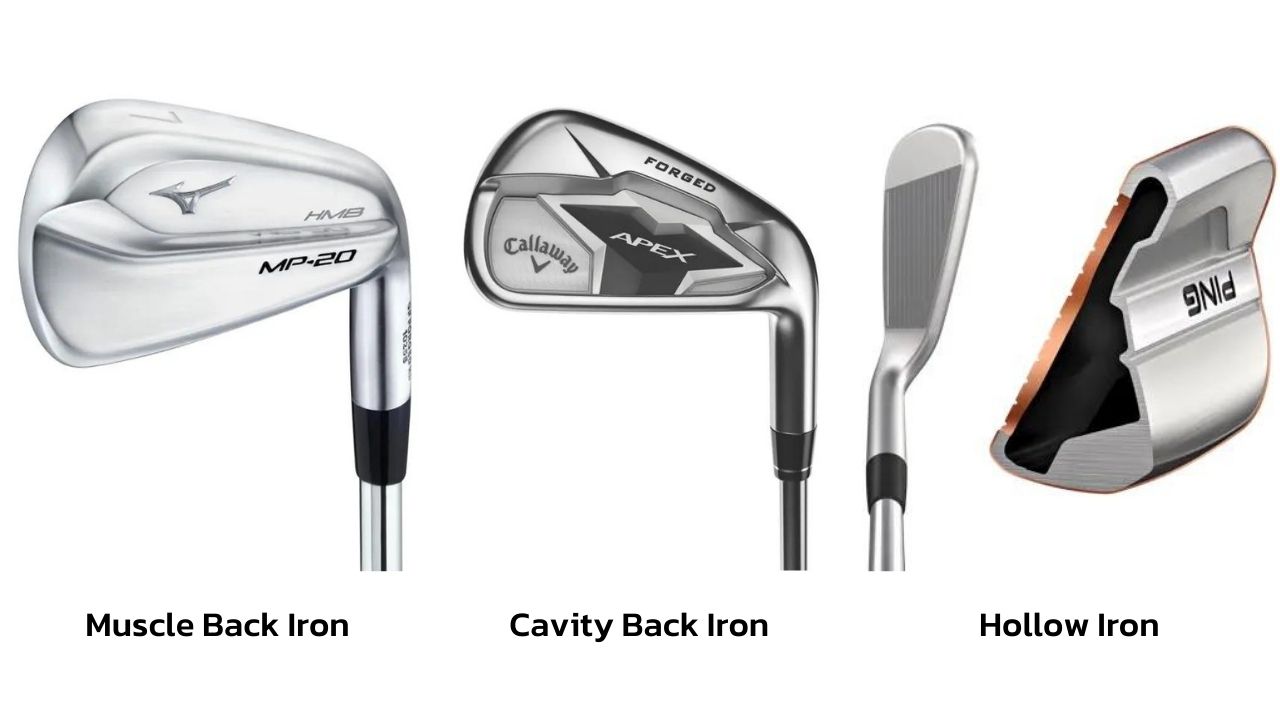
Types of Irons for Different Skill Levels
There are 4 categories of irons plus hybrid sets. Irons categories are:
- Player Irons
- Player Distance Irons
- Game Improvement Irons
- Super Game Improvement Irons
- Iron Woods/Hybrids
Player Irons
Player irons are a muscle back iron or a blade iron. They have a thin profile and are the most challenging to hit. The pros favor these irons because they allow for better feel and shot making ability.
These irons forged from a piece of soft steel are the most adjustable irons. You can bend the head to different loft angles to make the clubs 100% customized to a play style. The soft iron is what contributes to the increased feel. If you’ve ever hit a forged club right in the middle of the club face, there’s not a golf shot that is more satisfying.
There’s a reason they are called player irons and it’s not just because of the skill needed to hit them. These are expensive pieces of equipment with sets going for as much as $2500.
Player Distance Irons
These irons have a little more forgiveness and tend to be more of a forged cavity back iron or forged hollow iron. The cavity moves the weight distribution to the perimeter and towards the rear of the club. This increases the size of the sweet spot making it more forgiving.
Because of the forged construction, they have a comparable feel to a muscle back player iron. The tradeoffs are less workability and more forgiveness. Because they are easier to hit, these types of irons have longer averages than a player iron.
Player distance irons bridge the gap between player irons and game improvement irons. They offer some of the forgiveness of game improvement irons combined with some of the feel of player irons.
Game Improvement Irons
These cavity back or hollow irons are used by players of all skill-levels including pros on the PGA Tour. Many of the hollow irons in this category have a forged face but not complete forged construction. Many of the cavity back irons are cast, not forged. These irons are more forgiving and less workable than player distance irons. This is often associated with a lower price tag as well.
Super Game Improvement Irons
These irons are the most forgiving on the list and most sets of these irons come with hybrids for the first 3-4 clubs with the rest being big cavity backs. The oversized heads are designed to get the ball airborne with as little effort as possible.
These clubs are designed to interact with the turf in a way that minimizes the large divots typical of beginner and high handicap players. This helps with making contact and as golfers improve they can start upgrading their bag.
BONUS: Hybrid and Iron Wood Sets
These clubs are hard to classify as either a hybrid or an iron because they fit into both categories. Some club manufacturers such as Wilson and Cleveland have started making sets of “irons” that are entirely “hybrids”. These clubs are the hybrid between hollow irons and hybrids.
These clubs target slow swing speeds and higher handicap players. I got some for my wife earlier this year and she has seen her best rounds since she was on the golf team in high school.
I also currently play this style of club and I love them. I found an excellent deal on them used. After playing a couple rounds, immediately abandoned my forged Callaways. I play the Cleveland 588 altitude hybrids. My set is 5-PW but now they are starting to even make gap wedges and sand wedges for some sets.
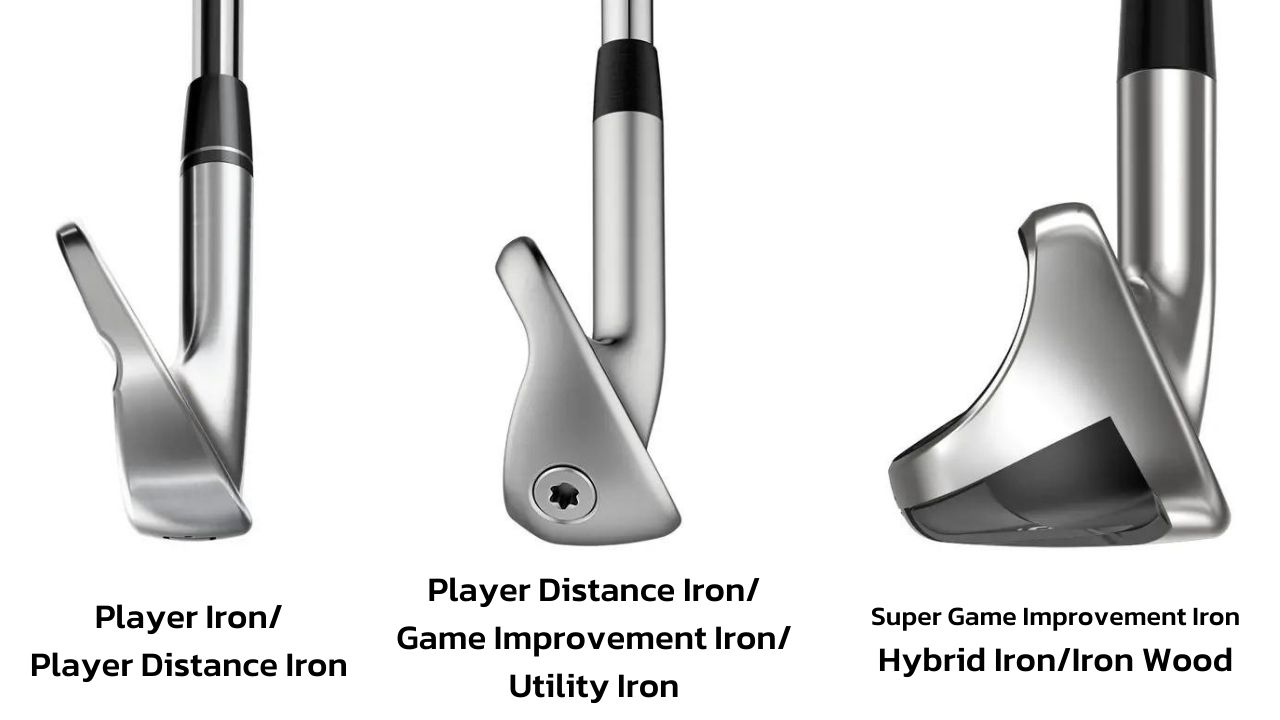

Combo Irons
Many players now are “comboing” their iron sets. This means they might play cavity back irons for their long irons 3-6 and muscle back irons for their short irons 7-PW. Club manufacturers are starting to buy into this idea with the Taylormade P-700 series epitomizing it. There are 5 styles of clubs in the p-700 series that you can combo in different ways to fit your play style.
Utility irons
Utility irons are the younger brother of the hybrid. These clubs are essentially a hybrid of an iron and a hybrid. They are shaped much more like an iron but are typically hollow and weighted more like what you would expect for a hybrid. The goal of these clubs is to try and increase playability without sacrificing too much of the forgiveness and “utility” of a hybrid. Many pros will use one of two of these at the longer end of their irons in their comboing.
Wedges
Wedges have become the backbone of every good player’s bag. These are the shortest clubs in the bag and also have the heaviest club heads and highest loft. Typically a player will carry 3-4 wedges. These are split into broad categories: Pitching Wedge (PW), Approach/Gap Wedge (AW/GW), Sand Wedge (SW), and Lob Wedge (LW).
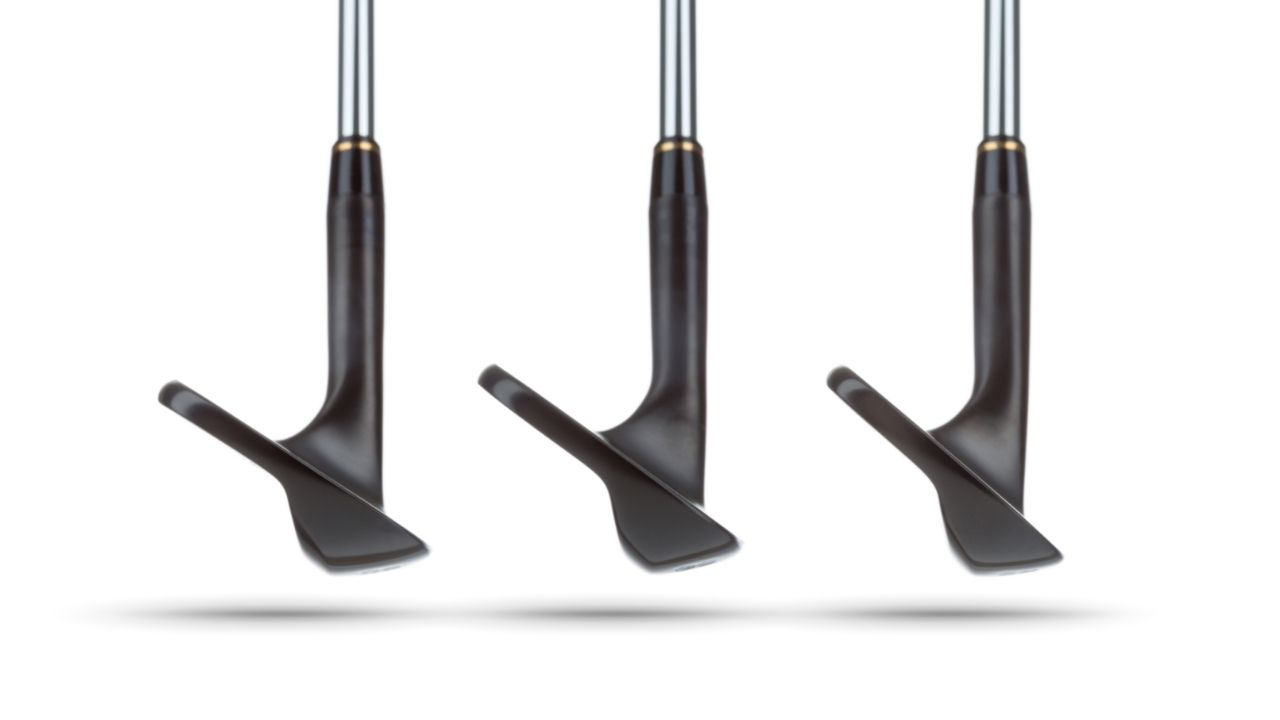
Wedges are not typically denoted in this manner, however, because even within these categories there are multiple angles:
- Pitching Wedge Loft: <50°
- Approach Wedge/Gap Wedge Loft: 50°-55°
- Sand Wedge Loft: 56°- 59°
- Lob Wedge Loft: >60°
The reason they are categorized this way is because of the types of shots typically hit with the lofts.
Pitching Wedge
This wedge is typically just an extension of the iron set in your bag and most irons sets include at least a pitching wedge. It’s commonly hit with a full swing for shots 10-15 yards inside the range of your 9 iron. It is also a handy loft for knock down shots and chip and run shots around the green.
Approach Wedge/Gap Wedge
What the “A” in AW stands for is a source of some debate. I have seen it also denoted as an attack wedge but I see it more commonly referred to as an approach wedge. This wedge is usually around 52° and fills the “gap” between the pitching wedge and the sand wedge. This wedge is a favorite from short distances as most golfers feel comfortable with ½ and ¾ swings to achieve their desired yardage.
Sand Wedge
The Sand Wedge was created for just that: Sand. It is most commonly used for shots out of greenside bunkers. It can also be opened up for effective flop shots and higher chip shots around the green.

Lob Wedge
Although typically a 60° wedge, these wedges have some that are as much as 70° of loft. Because of the high loft it can be tough to make solid contact so many higher handicap players avoid carrying a lob wedge. The idea behind the lob wedge is to get the ball as high as possible with the maximum amount of spin in order to stop it short on the green or flop it over an obstacle.
If you want to learn more about selecting a wedge check out our article What Wedges Do I Need?
Putter
Putters are often called the “flatstick” because they lack almost any loft. Although most putters have 3° or 4° of loft they are constructed to get the ball to roll smooth along the green.
There are two primary categories of putters, blades and mallets, that golfers use. A blade is a thinner profile putter which tend to be lighter than their mallet counterparts. A mallet putter has a long head stretching out from the shaft backwards to provide additional weight and balance to the club. There are also half-mallet putters which are essentially a hybrid of the two.

The shaft of a putter is also different from other clubs. Some putters have it mounted in the center of the face (face balanced) vs some having it mounted towards the heel of the club (toe balanced). Additionally some putters have an offset in their shaft. Toe balanced putters favor golfers with an arcing stroke while face balanced putters favor a flat stroke.


Faces of putters vary as well with some having a solid construction face and others having an insert. These inserts can have different properties which affect feel, ball roll and spin etc.
Keeping with the theme of putters being the most variable clubs in the bag, they also have the most options for grips. Many players prefer a pistol grip or oversized grip but any grip can be used on a putter.
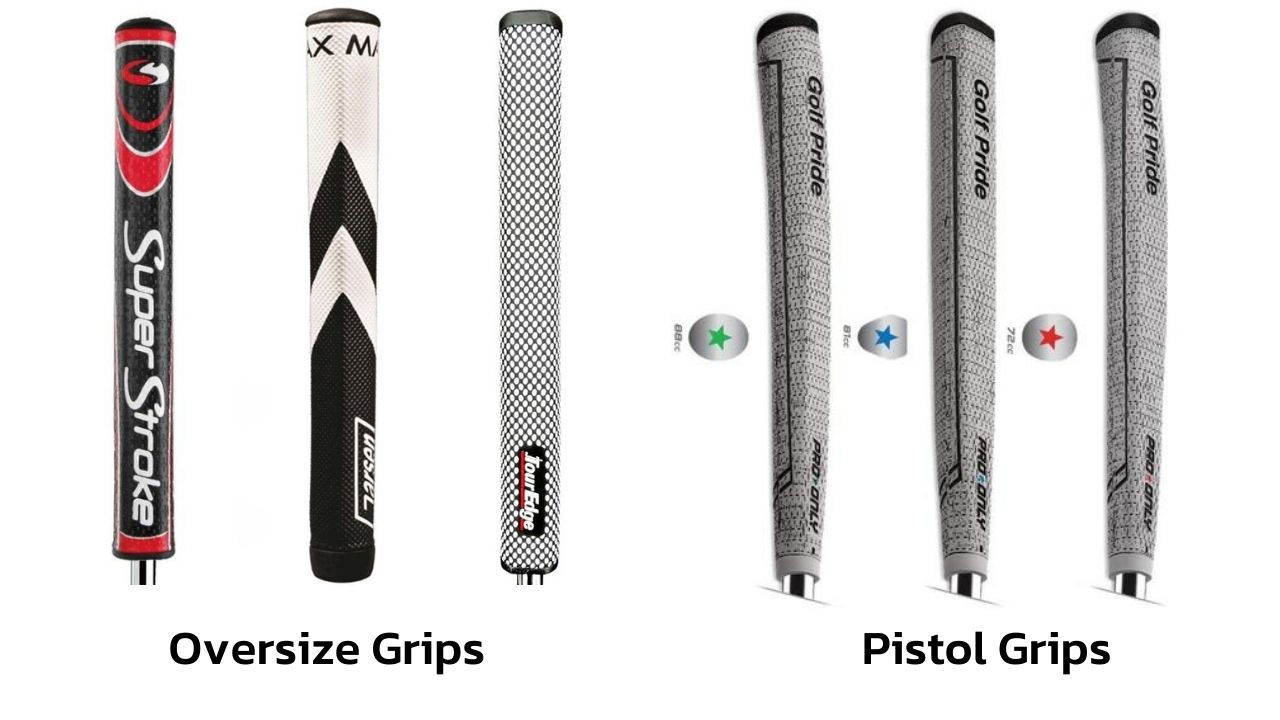
Putter selection is a matter of personal preference. This is why any golf shop you walk into will have a putting green surrounded by racks of putters to test out.
Final Thoughts
There are so many different kinds of clubs available to golfers today. If you can, find a PGA Tour Superstore or Dick’s Sporting Goods or a local club fitter to try out some of the clubs and find what works for you. As technology improves so will the clubs so make sure to continue to check back to find out what clubs are available.
